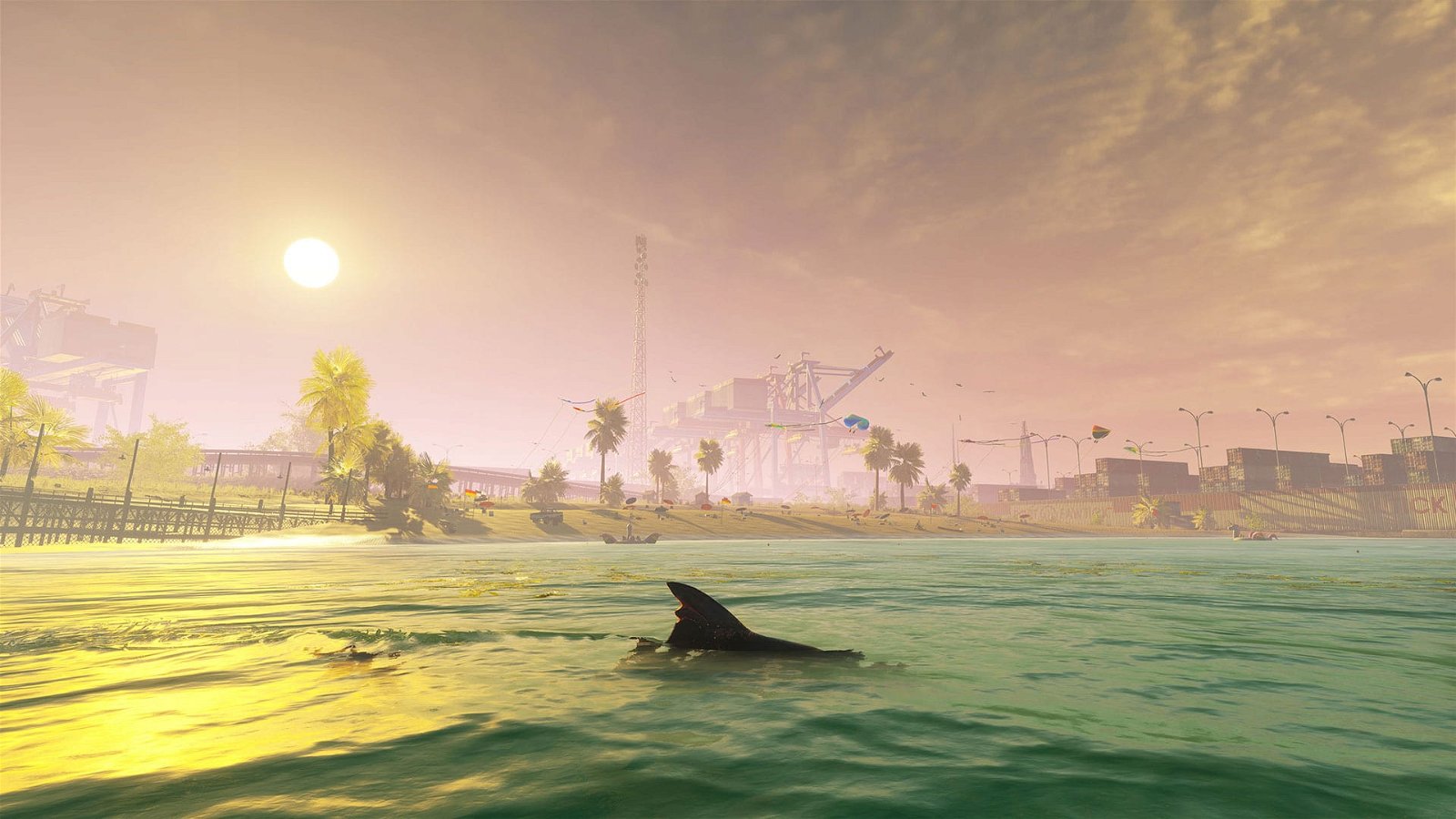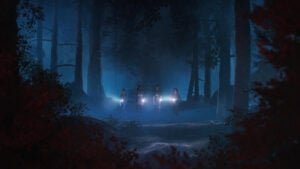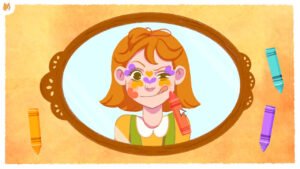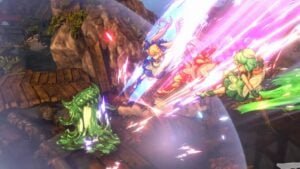Roaming the deep waters of the gulf coast, the great white maintains its place as the apex predator of the seas.
With powerful jaws, and rows of teeth, this is an animal few want to trifle with, and even less want to make an enemy with. Yet when a young white shark is cut from his mother and thrown back into the ocean, this is just what a group of deep-sea fishermen did, leading to the events of Tripwire Interactives shark action RPG Maneater.
Setting onto a bloody quest for revenge, Maneater is a game abut the brutal world of the seas and the quest for revenge. As yr shark slowly evolves, you must choose how you take on the deadly open ocean. With a team that is passionate and a concept that sells its self, Maneater is a game that everyone wants to see, play and enjoy. in a sit-down interview, CGMagazine got a chance to talk to Tripwire Interactive CEO, John Gibson, about the game, the process of bringing it to life, and what fans can expect when they sink their teeth into it on May 22nd.
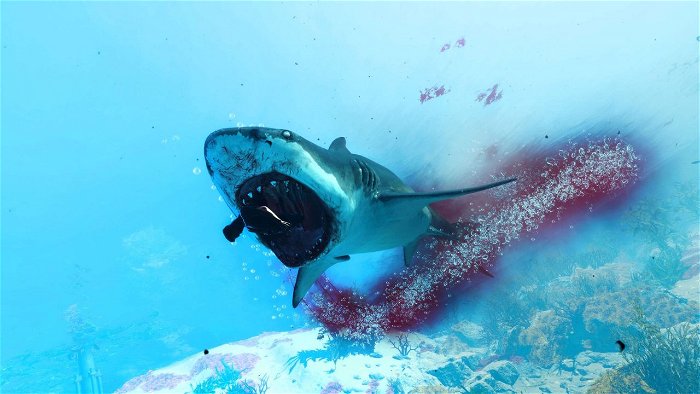
CGMagazine: Since this was the first time players have had a chance to go hands-on with Maneater, I’m sure you were eager to see some of the responses as people were playing. What did you think of their responses?
John Gibson: Hearing people cheering shouting laughing, saying “wow”, gasping — it was incredible. Honestly, I’ve been making games for almost 20 years, and these were some of the best from-the-gut experience I’ve seen from people playing our games for the first time.
CGMagazine: So how did Maneater come to be?
John Gibson: In the late 2000s, there was a guy named Alex Quick who was making this mod Killing Floor, and he started talking to us about bringing his mod over to one of our games we played it, we thought the mod was really really amazing. We decided to offer to buy the game from him and give him some great royalties and work with him to bring it commercial, which we did.
After we finished Killing Floor, Alex went off started his own team, [Blindside Interactive], and created a game called Depth, which was a very successful sharks-versus-humans multiplayer game. After that, he decided he wanted to make a single-player game, and he wanted to make it with a shark. And so he had all these assets from his multiplayer shark game and so it was a great place for him to start. He and his team at Blindside created a prototype and brought it to us, and we said, “yeah we’ll publish this. This seems like it will be really cool.” And then, we were the publisher for a while; they developed the game.
We announced it with the trailer at the PC Gaming show in 2018, and the reaction from the press and from fans was astounding. I mean, we knew people like sharks, but we underestimated how much people like sharks. And we were blown away at the incredible reaction. But we also learned that the expectations, both the press and the players had for the game was something far beyond what a small five or six-person team was capable of. So, for the second time in 10 years, we went to Alex and the team at Blindside and said, “Hey, would you like to sell this game to Tripwire and we’ll give you some great royalties on the game when it comes out? We’ll work with you to develop and turn it into a commercial game, only will throw 50 people out instead of five. And we’ll help it realize the expectations that the fans and the press have for it.”
And the second time in 10 years, Alex said yes. And so, that was about a year and a half ago and here we are.

CGMagazine: Even though there are some great comedic moments in the game and it’s framed with a great cast of comedic voice actors, at the end of the day, it’s still a game about a deadly man-eating shark, so even early on I noticed some incredibly dark moments. How were you and the team able to find a balance between the dark subject matter and humour?
John Gibson: So it’s really challenging, because from the story aspect — and there was a team of us working on the story: I did a lot of the early script and concepts for the story, and then worked with a great writer, Matt Enton, on fleshing out the story. We wanted the players to care about the sharks motivations. We want the players to care about you know why Scaley Pete was who he was. So we did need to have a few serious and dark moments in there, but also at the end of the day, if it’s a 10 or 15-hour open-world RPG, you don’t want 10 or 15 hours of brutal, people screaming and dying, and it’s terrible, and it’s horror. Because we thought about the horror angle but we really — and this is a credit to the team, especially our character team and our environmental art team — wanted to come up with, really, a more humorous take on it. It’s a little cartoony. It’s a little comic book. We came with the idea for the reality show angle to tell the story. We really thought about this and decided that we’ll have a story that’s serious at moments, but we’ll have a narrator that’s pretty much funny, most of the time.
CGMagazine: And speaking of the narrator, Chris Parnell was an excellent choice for that role. How did he become involved with the project?
John Gibson: So, once we knew that we wanted to have a narrator we began thinking about the style that we wanted. We thought slapstick would be…it’ll flash a little bit too much and it will be a little bit like putting filet mignon on your ice cream: the two things don’t quite go together. But we did want funny, and we thought about great comedic actors like Leslie Nelson in Naked Gun and Airplane and how he was always able to play things so straight, but he’s saying things that are completely off the wall. We looked at who’s great at that now, and thought, well, Chris Parnell is great at that. So we reached out. We sent him the script and we talked to him, told him what the game was about, and he got so excited about what he saw, saying that this would be a really unique opportunity and a really unique character to play for him. And can we got the first recordings back and we’re like, oh yeah, we chose the right person. He’s…he’s so great.
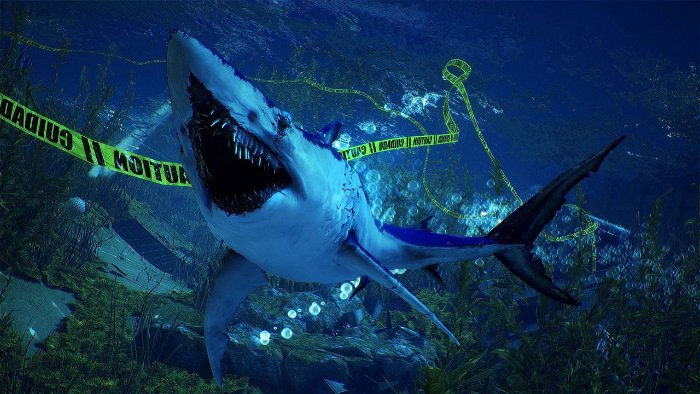
CGMagazine: You definitely get that, especially through a lot of the flavour text. It must have been challenging to pull back on some of the jokes that could have gone totally nuts.
John Gibson: I find that balance very hard. Take our Killing Floor games. We’ve gone completely bonkers at times, and it fits. But it’s actually a little harder to walk the fine line between slapstick and subtle humor. So, yeah, that was challenging to do you know. But you could tell [when something didn’t work]. As a, as a former musician, when you play one note, that’s out of tune, it kind of sticks out. And when a joke was a little too slapstick, it stuck out. And when you dial that back a little bit.
CGMagazine: In terms of mechanics, you’ve kept things pretty simple. What led to that choice?
John Gibson: So we wanted you to be able to do more than just bite and swim, and we knew that [Maneater] would need more than that. First, we started with what actually exists in nature. Well, sharks bite things. That’s cool. Sharks thrash things. That’s cool. Certain sharks, like the thresher shark, actually do smack things with their tail and stun them so they can attack them and eat them. So that was pretty natural.
Then what grew out of that was things like the whip shot attack, where you clamp onto something and then smack it with your tail and launch it at enemies for fun. And that was when we were starting to get a little over the top. We were, like, well, if people are launching depth charges at you, those can be like grenades that you launch back. If there are swordfish in the game, those can be like sniper rifle bullets or arrows. It just kind of grew from there.
We didn’t want to throw all those things at the player at once. While you start out the game as a very powerful shark and then you go to being a baby shark, we give you a chance to grow into those things, and then give you a lot more things that you can do later on, as you get into the evolutions for the shark.
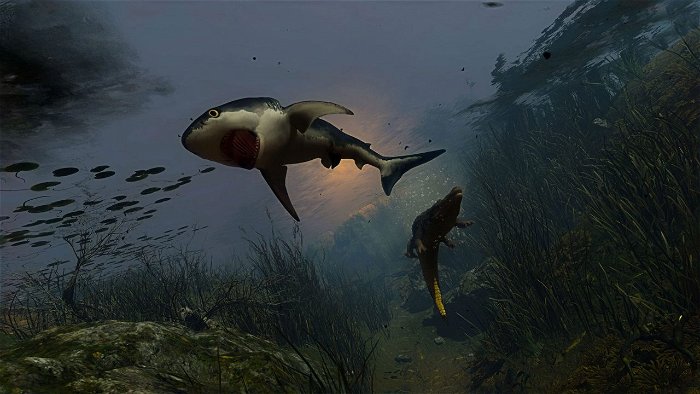
CGMagazine: That was also an interesting choice — having the player start off as a fully-grown shark and then after the first major plot point, bring them back to the start of the skill tree as a baby shark.
John Gibson: I think that when you’re introducing a new concept — and open-world shark RPG is kind of new and playing as a shark is very different — you need to hook the player, very quickly. If they pick up a first-person shooter, people have been playing first-person shooters for years and they’ll know right away what to do. They’ll know how the guns feel, they know how the movement feels.
As we started prototyping the game, when you started out as the Baby Shark and you’re weak, and you’re getting your butt kicked by alligators and barracudas or whatever we thought that wouldn’t help the players right away. Part of what people want is to experience the power fantasy of being a powerful shark, but we didn’t just want to have the whole game be your alpha shark.
So, once again, we started looking back at our past and thought about it. We thought about games like Metroid, you know the classics. You start with all the power, then you lose it, and you spend the rest of the game getting back to where you were and then beyond where you were. And we really liked that model for Maneater. We let you experience that powerful shot right out of the gate. And then take it away, and allow you to spend some time getting it back.
CGMagazine: All though there’s a lot that’s over-the-top in terms of how the shark can evolve, a lot seems very grounded in reality. Was there a lot of shark research beforehand — did you work with a consultant?
John Gibson: We didn’t hire an external consultant, but we were very fortunate to discover that we had really some shark experts on the team, particularly our lead character artist. This really talented guy we had managed to get to leave ID where he was working on Doom monsters, come work with us and is a huge shark fanatic. I mean, it’s no joke — he had a shark wedding cake! He had studied shark anatomy and how sharks move, and then our animation team and our tech art team got into watching film and video, and slow-motion videos of sharks moving. They studied all the different kinds of sharks and all the different kinds of combatant wildlife that are carnivores. It really did add up to creating a very realistic and organic base of how a shark moves and how it looks and what is anatomy is like and what its texture looks like. Then we used that as a base to build a few ridiculous things on top of it.
CGMagazine: From my time with the game, it feels like a lot of the movement drew from a lot of battleship style games. Were games like that used as an inspiration?
John Gibson: We looked at a lot of different things. We looked at games with submarines and vehicles and boats, and we looked at other third-person combat games, but we really couldn’t find anything that we thought was a great point of reference. The closest thing would be, maybe, space. Space shooters sims or space shooter games, like the old X-Wing games or newer games like Star Citizen. But it’s like space combat sims with melee — without shooting lasers.
And so, we just had to experiment until we found we found a really good way to move through the world — a way that didn’t feel robotic. And then we had to build on that; looking at ways to make the combat interesting without just two sharks swimming up to each other and just biting. And that’s how we really became up with the wildlife combat. It’s a bit of a mix between a sword fight with lunges and parrying and then moves that are a bit like aerial combat. We kind of melded those ideas together into something that that was interesting.

CGMagazine: Because of the different environments you visit and the subject matter and the way it’s approached, Maneater is an excellent platform to discuss the many environmental issues faced by aquatic wildlife. Will the game explore this? And if so, to what depth?
John Gibson: So when we look at the game and how we present it to the gamer, we’ve certainly thought about that, especially in terms of the shark’s motivation. I joke that the shark’s an environmentalist, but really, the waterways, are the shark’s environment. And when there’s a lot of people in there polluting and fishing and taking its food away, from the shark’s perspective it’s trying to restore the natural balance of that environment.
But that’s really more subtly hinted at in the game. We go a little bigger within our trailers. If you saw the last trailer that we released, you know shark finning is a big problem — millions of sharks die every year. We show an infographic: this many million sharks are killed every year, and four or five humans are killed by sharks every year. So we don’t want it to come across as “evil shark! Oh, you should hate it!” It’s really the shark’s got a real reason to be unhappy and want to restore the balance of nature.
CGMagazine: Thanks for taking the time to speak with me. Before we wrap up, is there anything you’d like our audience to know about Maneater?
John Gibson: Sure, I think one thing that we really want people to take away from the game at this point is that there’s a lot more there than what there appears to be on the surface. Yes, you’re a shark, and yes, being a shark is really cool — but beneath that it’s a rich game with a depth of exploration and diversity in the ways you can play it. There’s a full story — there’s such an interesting story arc of Scaley Pete and his background and how that made him who he is, and the shark’s motivations for wanting to take Scaley Pete out. So there’s a real game here, and it’s something that we’re excited for people to experience.
